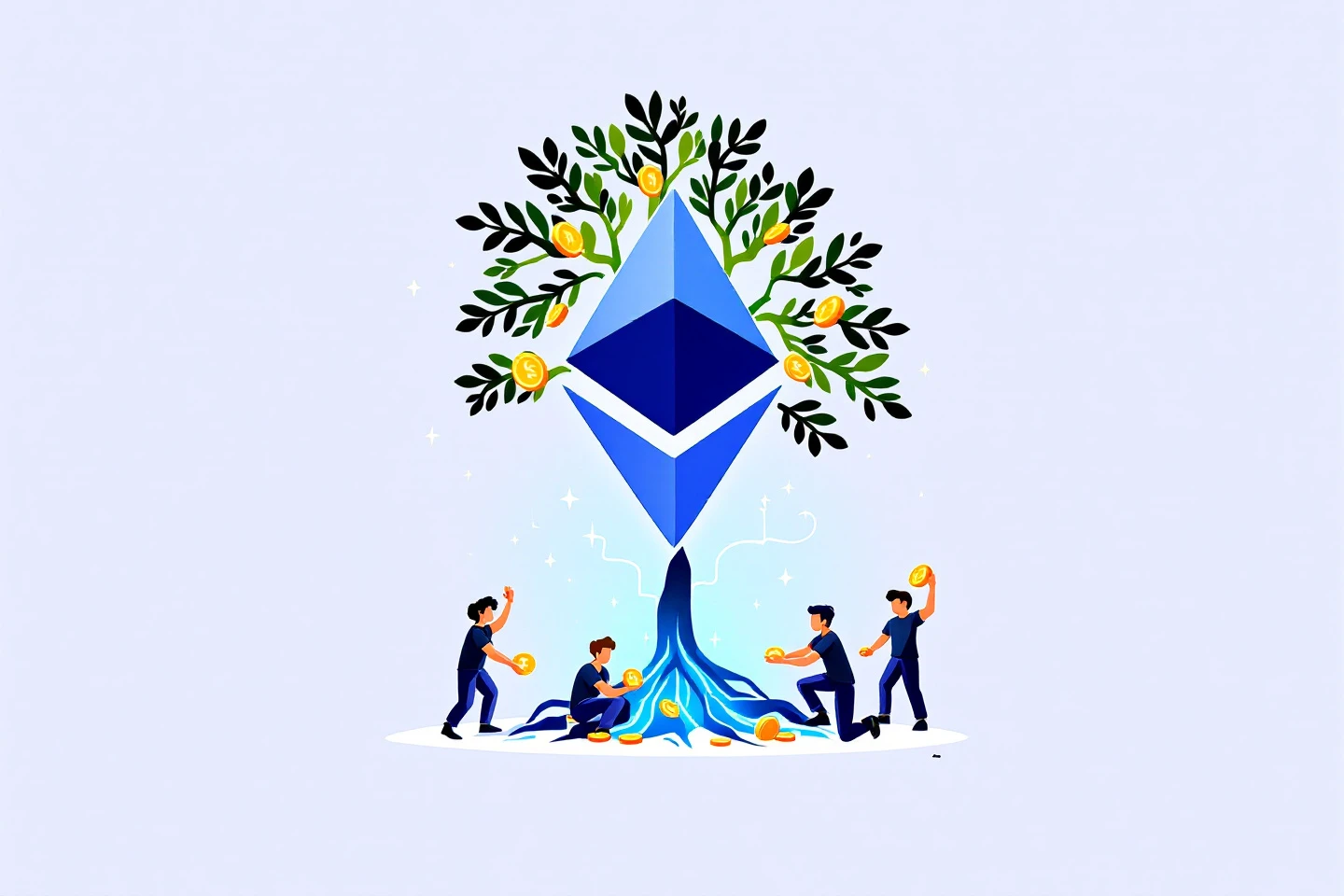Ethereum has sparked a revolution in decentralized finance, smart contracts, and Web3. But as adoption grows, so does the burden on its network. High fees and network congestion have become well-known obstacles, limiting Ethereum’s potential to serve a global audience. Enter Layer 2 solutions: innovative scaling technologies built to supercharge Ethereum, making transactions faster, cheaper, and more accessible for everyone.
In this article, we’ll break down the concept of blockchain scalability, explain why it matters for Ethereum, and explore the leading Layer 2 platforms—Arbitrum, Optimism, and zkSync—that are redefining what’s possible on the world’s busiest blockchain.
What is Blockchain Scalability—and Why Does Ethereum Need It?
Scalability refers to a blockchain’s ability to process more transactions per second (TPS) without compromising security or decentralization. As Ethereum became the backbone for NFTs, DeFi apps, and token launches, its mainnet (Layer 1) struggled to keep pace. Congestion surfaced, driving up gas fees and slowing down confirmations.
Without effective scalability, Ethereum risks losing users and developers to faster, more efficient competitors. That’s where Layer 2 solutions come in, offering a powerful way to boost throughput while preserving Ethereum’s hard-earned security.
Demystifying Layer 2: How Does It Work?
Layer 2 (L2) refers to protocols built on top of Ethereum’s base layer (Layer 1). These solutions process most transactions off-chain and then submit concise transaction summaries—or proofs—back to Ethereum for settlement. By moving computation and storage off the mainnet, Layer 2s dramatically increase scalability.
Here’s why Layer 2 matters:
- Lower Fees: Minimize transaction costs for users and app developers.
- Faster Settlements: Reduce waiting time for confirmations and user interactions.
- Sustained Security: Securely anchor key data to Ethereum’s robust Layer 1 chain.
- More Open Access: Enable global participation by making dApps affordable for everyone.
Meet the Leaders: Arbitrum, Optimism & zkSync
Let’s explore the most popular Layer 2 solutions driving Ethereum’s next growth wave—each with its own approach and innovations.
Arbitrum: The Leading Optimistic Rollup
Arbitrum stands out as one of the earliest and most widely adopted Layer 2 solutions on Ethereum. Powered by an “optimistic rollup” architecture, Arbitrum bundles thousands of transactions off-chain and then posts the summary to Ethereum for settlement. By assuming most transactions are valid (i.e., optimistic), the network only checks and challenges transactions when necessary, keeping things efficient.
Key Features:
- High Compatibility: Seamlessly supports existing Ethereum smart contracts without complex changes.
- Lower Costs: Users save up to 90% on gas fees compared to Layer 1.
- Active Ecosystem: Hundreds of dApps, DeFi projects, and NFT platforms already run on Arbitrum’s network.
Arbitrum has rapidly become a go-to choice for DeFi protocols, offering developers both scalability and the security of Ethereum’s base chain.
Optimism: Scaling with Simplicity and Speed
Optimism is another front-runner in the Optimistic Rollup category. Like Arbitrum, Optimism leverages off-chain transaction batching to boost speed and reduce fees, but it’s cherished for its simplicity and close alignment with Ethereum’s design.
Key Features:
- Minimal Code Changes: Developers can migrate apps with little to no modifications.
- Community Governance: The Optimism Collective steers the network, giving builders and users a stake in its direction.
- Funding for Public Goods: Through a unique grants program, Optimism channels a portion of fees toward funding open-source Ethereum projects.
Optimism’s focus on ecosystem incentives and transparent governance make it a strong pillar in Ethereum’s scaling journey.
zkSync: The Zero-Knowledge Revolution
While optimistic rollups offer major benefits, another breakthrough called zk-rollups pushes the boundaries even further. zkSync, developed by Matter Labs, is the leading project in this category.
How zkSync Works:
zkSync relies on cutting-edge cryptography called zero-knowledge proofs (ZKPs). Instead of optimistically assuming transactions are fine, zkSync generates mathematical proofs confirming the validity of every transaction batch before posting it to Ethereum. This approach is not only incredibly secure—it’s also near-instant and avoids lengthy waiting periods for transaction challenges.
Key Features:
- Instant Finality: Confirm transactions within seconds, not minutes.
- Ultra-Low Costs: Further slashes costs with advanced compression and provable trust.
- Enhanced Security: Provides the highest security by ensuring mathematical proof for every batch.
zkSync is rapidly gaining traction, with more projects integrating its solution and developers excited about its next-level performance.
Layer 2 Comparison: Arbitrum, Optimism, and zkSync
Let’s see how these technology titans stack up in a quick table:
| Layer 2 | Technology | Speed | Cost Reduction | Ethereum Compatibility | Security Model |
|---|---|---|---|---|---|
| Arbitrum | Optimistic Rollup | Fast | High | Full | Challenge-based/fraud proofs |
| Optimism | Optimistic Rollup | Fast | High | Near-full | Challenge-based/fraud proofs |
| zkSync | zk-Rollup (ZKP) | Near-Instant | Highest | High (growing) | Zero-knowledge proofs |
All three solutions are squashing Ethereum’s scalability barriers, though zkSync’s innovative architecture may set a new standard for security and instant confirmations.
How Layer 2 Is Transforming the User Experience
Imagine paying just a few cents for Ethereum trades, minting NFTs in seconds, or gaming without lag. This is the promise Layer 2 solutions bring to everyday users. Popular dApps and protocols are migrating to Arbitrum, Optimism, and zkSync to deliver these improved experiences.
Benefits include:
- Accessible DeFi: Micro-transactions become affordable, welcoming more global users.
- NFT Innovation: Artists and creators can mint and trade NFTs without hefty fees.
- Gaming at Scale: Fast, cheap, secure transactions unlock real-time blockchain gaming.
For developers, easier onboarding and better economics unlock new creativity and business models.
Real-World Adoption: Layer 2 in Action
- Arbitrum: Trusted by DeFi powerhouses like Uniswap, GMX, and Aave, offering cheaper swaps and liquidity pools.
- Optimism: Adopted by protocols such as Synthetix and Velodrome, powering lower-cost derivatives trading and stablecoins.
- zkSync: Used by decentralized exchanges like ZigZag and new NFT platforms aiming for mass-market audiences.
These platforms are only the start—Layer 2’s influence is expanding every day as more users, apps, and services move to faster rails.
Challenges and the Future of Layer 2 Scaling
Layer 2 isn’t a magic bullet. Each solution faces critical questions—can they maintain decentralization as they scale further? Will bridges between chains stay safe and reliable? How quickly can developers adapt as new technology arises?
Despite challenges, the rapid adoption and investment in Arbitrum, Optimism, and zkSync demonstrate fierce optimism about Ethereum’s scalable future. Upgrades such as Ethereum’s own roadmap (including sharding) and more powerful L2 integrations will further strengthen this landscape.
Conclusion: Layer 2 Is Supercharging Ethereum’s Future
Ethereum has always been the proving ground for blockchain’s biggest dreams—but its future depends on breaking free from old limits. With Arbitrum, Optimism, and zkSync, Ethereum is already achieving this vision—offering vastly lower fees, fast finality, and more open doors for developers and users alike.
If you’ve been frustrated by high gas fees or sluggish transactions, now’s the perfect time to experience the next evolution of Ethereum. The Layer 2 revolution is in full swing, and the best is yet to come!
Ready to Start?
Explore Layer 2 solutions today—dive into new dApps, move your assets, or start building your own ideas with the confidence that scalability is finally here. Be a part of Ethereum’s future—try Arbitrum, Optimism, or zkSync and feel the difference firsthand!






